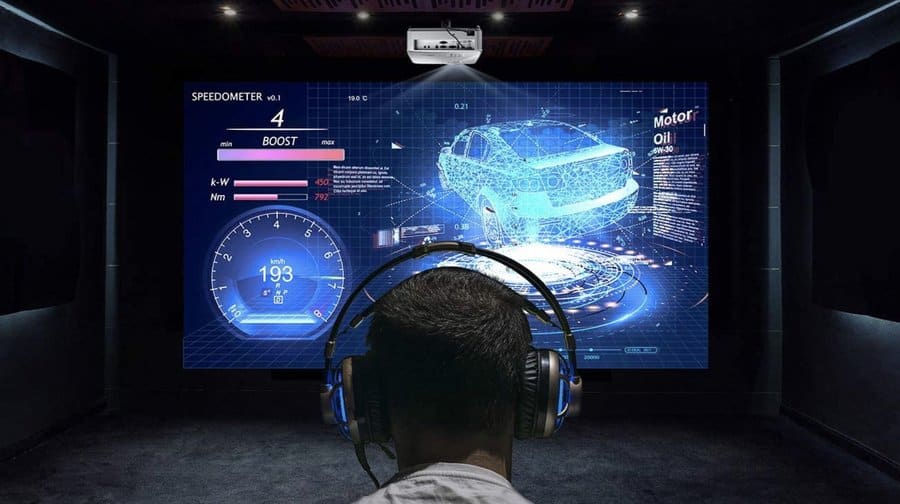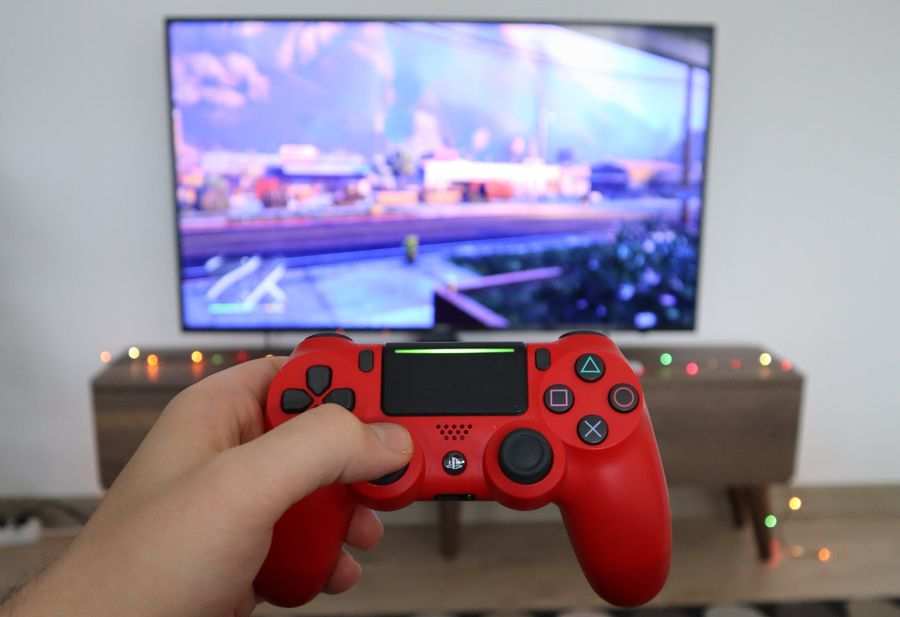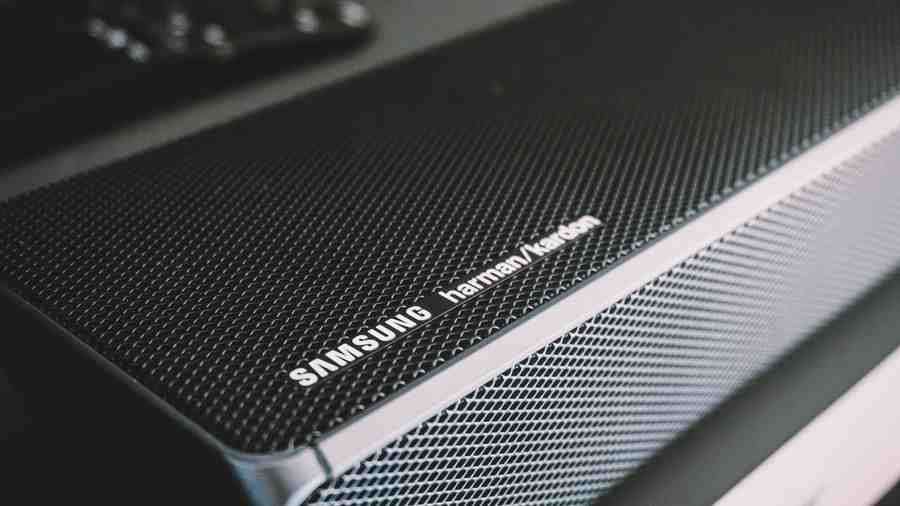
PlayStations are pretty awesome across the board. They not only give you a great gaming experience, but you can also play movies on them. So, naturally, you might want to move beyond the TV screen and play to a larger screen, indoors or outdoors. Time to set up a projector!
Here’s how to connect a PlayStation to a projector: Connecting a PlayStation to a projector can be accomplished in the following steps:
- Obtain an HDMI cable (may be provided with the PlayStation)
- Connect the HDMI cable to the HDMI/MHL port of the projector (an adaptor may be needed for mini-projectors)
- Connect the other end of the HDMI cable to the video output port of the PlayStation
- Turn on the projector
- Turn on the PlayStation
- Access the Input/Source menu of the projector
- Set the Input/Source to HDMI
- Exit the Input/Source menu; output from the PlayStation should now be visible
The PlayStation 2, PlayStation 3, PlayStation 4, and PlayStation portable consoles can all be connected to any projector with an HDMI port.
Connecting a PlayStation to a projector can truly take your gaming experience to the next level. It does require the purchase of an additional cable and a little familiarity with connection ports, but with the right motivation it can be accomplished. Some projectors also have a wireless option, which can be utilized but does have its caveats.
Even if you don’t have an HDMI port on your projector, you can still troubleshoot and connect it.
Can I Connect My PlayStation If I Don’t Have An HDMI Cable or HDMI Port on My Projector or Television?
You can still connect a PlayStation to a projector or television without an HDMI cable or port, but you might need to acquire alternative cables or converters in order to achieve this.
The first step is to recognize what ports you do have on the device you are wanting to connect. A lot of televisions will have either a coaxial input (looks like a hole for a threaded screw), composite ports, or a DVI input. Some projectors will have a VGA (video graphics array) port.
The composite cable ports are a trio of red, white, and yellow inputs. A DVI input port is bulkier and looks more like what old computer monitors used to connect with. All of these ports can be connected to the PlayStation by using an HDMI converter.
A generic HDMI converter is fairly straightforward. Simply plug the relevant cables for the ports you are working with into the HDMI connector and then plug the connector into your PlayStation. Switch on your television or projector and then turn on the PlayStation and you’re ready to game.
If you are connecting with a DVI or VGA port, you will need an HDMI to DVI converter or VGA to HDMI converter. They work like the converter described above. Unfortunately, DVI doesn’t carry audio signals, so this can sometimes not be an ideal setup. If you would like a more detailed step by step, check out this great explanation.
What Should I Look For in a Projector If I Want To Connect It To a PlayStation?

If you want to be able to use a projector to project a game as you are playing it, it is helpful to select a projector with an HDMI or MHL port or wireless connectivity capability. The projector needs to be able to process the signal fast enough so as not to create a delay, or lag. A suitable projector for gaming needs to also be able to display high amounts of detail.
Some projectors allow for PlayStations to be connected through a wireless connection. Most of these require the projector to be within the line of sight of the PlayStation console (as in, it can’t be blocked by a wall or furniture.) Lag is reported more commonly with a wireless connection, and can vary based on the internet connection and distance of the projector from the console.
Some projectors might work better depending on the size of your room. A “short-throw” projector, like my top recommended 4K HDR gaming projector by Optoma, will allow you to project a huge image without a long distance between the projector and the wall. This works well for small rooms in which a gamer wants a big, crisp display but can’t put the projector very far from the wall or worries about objects casting shadows on the screen if set further away.
If you want a smaller screen size and want to set the projector further away, then a short-throw projector model is not a good choice. Short-throw projectors are specifically designed to create a gigantic image while sitting only a short distance away.
Why Should I Consider Getting a Projector For Gaming On My PlayStation?
A projector can provide a truly immersive gaming experience. Many projectors are now being designed with gaming specifically in mind. If you have ever been playing a game on your television and thought, “wow, I wish this screen was the size of my whole wall!” then a projector might be something worth considering.
Projectors certainly elevate solo gaming experiences, but where projectors can really add an advantage is in multiplayer games. Multiplayer games often result in a split screen display, which on a standard television can sometimes become visually cramped.
Imagine you are playing a four person multiplayer game. In this situation, the screen is divided into fourths, one fourth for each player. A projector can make that fourth of a screen as big as a standard television in some cases! This allows for a much more comfortable and enjoyable gaming experience.
Projectors also don’t take up as much space as a television. Most projectors are small enough to sit on a side table and are portable so they can be moved and stored away if more space is needed. This definitely isn’t the case for a television, especially one with the same screen size produced by the projector. Keep in mind, however some projectors might require additional space occupying equipment.
Are There Any Downsides to Using a Projector Instead of a Standard Television With My PlayStation?

While projectors can seem like a great decision, some users may not be thrilled with the experience provided by most projectors. Perhaps most notably, a projector’s output still cannot rival the clarity and resolution of a television from the same price range. Higher end projectors which can mimic the quality of a 4K/HDR television can cost upwards of $8000, putting them outside the price range of most consumers.
The trade off can be distinct. Either you settle for a television with a smaller screen but better resolution, better contrast, and richer colors, or you get a bigger image from a projector but sacrifice some of that image’s quality. More games are being released with 4K/HDR televisions in mind, so this consideration won’t be disappearing anytime soon and it is unclear when the price of 4K/HDR projectors will drop.
Most projectors also do not boast a robust stereo output. For gaming, sound can be critical, not only for creating a truly immersive experience but also for enabling a successful game play through. Investing in a quality set of speakers and hooking them up with your gaming console can truly elevate your gaming experience, but it is an additional cost.
Projectors take longer to turn on and off than a standard television, which may not be too noteworthy but can be frustrating after some time.
Projectors also run the risk of getting quite hot. Like most electronics, while running the projector produces some heat as a byproduct, so nothing can sit on or around the projector or else you’ll run the risk of damaging nearby objects.
Due to the cooling fans to reduce the heat produced, the projector inevitably is louder than a television when running. This hum can be distracting during periods of quiet gameplay. Bulbs on the projector will also have a finite lifespan, so you might find yourself spending more money and replacing bulbs at a displeasing frequency.
Do I Need to Worry About Lag In My Gameplay When I Use a Projector?
Fast paced gaming requires a projector that can keep up. Projectors are now being developed with gaming specifically in mind, which means optimized performance and less lag. Even some of the 4K/HDR televisions have difficulty minimizing delay, and so some games today have alternative game settings to try to adapt to these set-ups, with a little compromise in gameplay.
If you are worried about lag or are experiencing lag, you can consider playing games in these modified settings in order to permit a smoother gaming experience.
Some projectors allow for PlayStations and other consoles to be connected through a wireless connection. Most of these require the projector to be within the line of sight of the PlayStation console (as in, it can’t be blocked by a wall or furniture.)
Lag is reported more commonly with wirelessly connected devices, but this can also be due to varying speeds and consistency of internet connections and the distance of the projector from the console.
Is Buying a 4K Projector For Gaming Worth the Money?
If you are shopping around for a projector for your home set up, you’ll notice there is a steep increase in price once projectors start boasting 4K/HDR capabilities. Is it worth the money when compared to a standard HD projector?
The answer to that question will invariably change with personal preference, but there are some key points to keep in mind that might help you make the decision.
The higher end projectors like the Optoma are able to handle the signal output much better and deliver sharper, crisper images with truer colors. Many also come with a zoom range and an ability to shift the lens iris. If noise is a concern, the 4K projectors tend to be quieter due to better build quality.
Another consideration is simply whether you have 4K content you are wishing to play in the first place. Not all games are designed for 4K, so a more expensive projector might not be worth the cost if it won’t make a difference to what you’re planning to play.
The 4K projector also tends to have diminishing returns as the viewing distance increases. As one sits further from the screen, the quality of the image decreases until eventually it is equivalent to a standard projector or television. A nice graph summarizing this concept can be seen here.
Do I Need to Buy External Speakers for My Projector?

While I’ve previously mentioned that one of the downsides of projectors is that they don’t necessarily have the best audio output, buying speakers isn’t absolutely necessary.
Many newer styles of projector have improved built-in speakers which are a vast improvement over older models. These speakers can definitely produce an impressive audio output, but for some gamers it still might not be enough.
Using the built in speakers has its advantages. First of all, you don’t have to spend more money buying an entire audio system and take the time to hook it up. A separate audio system will also take up more space.
If you’re simply watching movies, the built in speakers might be more than adequate, but some serious gamers recognize that sound can be vital to successful game play and provide a truly immersive experience, especially with 3D audio right around the corner with the PlayStation 5. If you don’t want to buy a separate sound system, consider using headphones in this situation.
Just as one might buy a supplemental stereo surround system to use with a television, the option is available for projectors, as well. If you are someone who wants the ultimate gaming experience and the best system possible, then an external audio system might be a good addition to your room setup.
What Are Gaming Projectors And What Makes Them Different From Standard Projectors?
So I have mentioned before that projectors are being developed with gaming specifically in mind, but what exactly does that mean? It means that the projectors have settings built in that make them ideal for the unique demands of a video game.
One of the biggest concerns when considering projectors is lag. If your gameplay is lagging, it can really spoil the experience and keep you from being able to compete at your true skill level. Don’t worry: projector companies have recognized this and have addressed this concern head on.
Many models have specific “Game Picture Mode” settings, which significantly reduces lag. These settings also usually increase the contrast, meaning darker blacks and brighter whites, helping you identify the enemies lurking in the shadows before they have a chance to strike.
Gaming projectors are also designed to work better in ambient light. This means you don’t necessarily need your room to be movie-theater level dark in order to see the screen. Gaming projectors will often let you adjust the contrast settings to reach an ideal balance for your illumination set up.
If you want to know more about the benefits of gaming projectors and tips to improving performance, check out this great article by thepcenthusiast.com.
